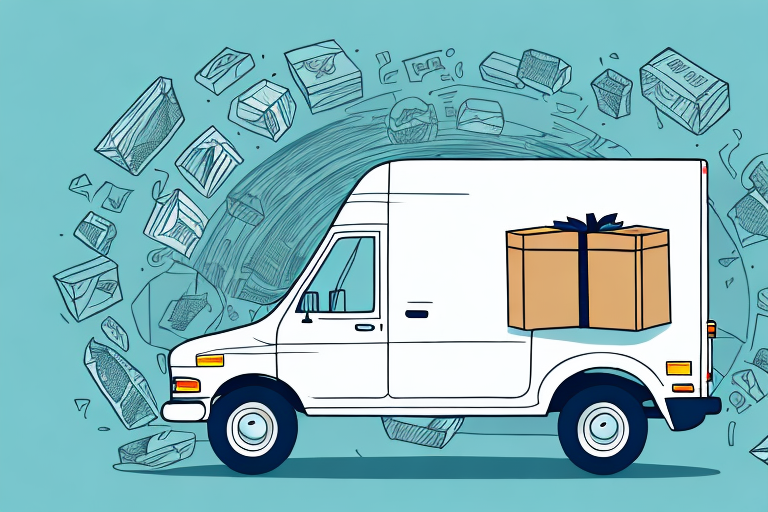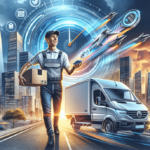Understanding Different Types of Delivery Services
Before selecting a delivery service, it's crucial to comprehend the various options available to ensure that your business needs are adequately met. The four primary categories of delivery services include:
- Express Delivery Services: Ideal for businesses that need to send urgent packages swiftly.
- Standard Delivery Services: Cost-effective options suitable for non-urgent shipments, typically without tracking or insurance.
- Same-Day Delivery Services: Perfect for businesses with time-sensitive orders, ensuring delivery within the same day.
- Specialized Delivery Services: Best for transporting perishable items, large goods, or products requiring special handling.
Additionally, some delivery services offer features like signature confirmation and delivery notifications, providing added security and transparency. It's essential to verify any restrictions on package sizes or weights with your chosen provider to avoid unexpected issues.
In-House vs. Outsourced Delivery Services: Advantages and Disadvantages
Businesses must decide between managing their delivery services in-house or outsourcing them to third-party providers. Each approach has its own set of benefits and drawbacks:
In-House Delivery Services
- Pros:
- Greater control over the delivery process, including staff training and scheduling.
- Personalized customer experience, as delivery staff are more familiar with the company's products and services.
- Enhanced communication and coordination within the business.
- Cons:
- Higher operational costs due to expenses related to staffing, vehicles, and maintenance.
- Limited scalability, especially during peak seasons.
Outsourced Delivery Services
- Pros:
- Access to a broader range of delivery options, including international and same-day services.
- Lower overhead costs and the ability to scale operations based on demand.
- Utilization of advanced delivery technologies and specialized equipment.
- Cons:
- Less control over the delivery process, which may affect quality and timing.
- Potential dependency on the third-party provider's reliability and service levels.
The decision between in-house and outsourced delivery services should align with your business’s specific needs, budget, and long-term strategic goals.
Selecting the Ideal Delivery Service for Your Business
Choosing the right delivery service involves evaluating several key factors to ensure that the provider aligns with your business objectives and customer expectations:
Price and Cost-Effectiveness
Compare pricing structures of different providers to find a cost-effective solution that fits your budget. Consider potential volume discounts and long-term contracts that may offer better rates.
Speed and Reliability
Assess the delivery speed and reliability of each provider. Look for providers with consistent on-time delivery records and the ability to handle your specific delivery requirements.
Reputation and Reviews
Research the reputation of delivery services by reading customer reviews and industry ratings. Trusted providers often have positive feedback regarding their service quality and customer support.
Location Coverage
Ensure that the delivery service covers the regions or countries where your customers are located. Comprehensive coverage can enhance customer satisfaction by reducing delivery times.
Customer Service
A responsive and supportive customer service team is vital for resolving issues promptly. Verify if the provider offers multiple channels for support, such as phone, email, or live chat.
Security and Tracking
Choose a service that offers robust package tracking and security measures to protect your shipments from loss or damage. Features like real-time tracking and insurance options can provide added peace of mind.
Optimizing Delivery Operations
Efficient delivery operations are essential for maintaining high customer satisfaction and minimizing costs. Here are strategies to optimize your delivery processes:
Negotiating Better Rates
Leverage your delivery volume to negotiate favorable rates with service providers. Compare quotes from multiple providers and use competitive pricing information to secure the best deals. Building a strong relationship with your provider can also lead to better pricing and service terms.
Real-Time Tracking for Customer Satisfaction
Implement real-time tracking systems to monitor deliveries and provide customers with accurate delivery estimates. Real-time tracking not only enhances transparency but also allows you to proactively address any delivery issues, thereby improving customer trust and satisfaction.
Optimizing Delivery Routes
Utilize route optimization software to determine the most efficient delivery paths, considering factors like traffic, distance, and delivery time windows. Efficient routing reduces fuel costs, minimizes delivery times, and lowers the environmental impact.
Managing Inventory and Stock Levels
Effective inventory management ensures that products are readily available for delivery, preventing stockouts and excess inventory. Implementing an inventory management system can help track stock levels, forecast demand, and streamline reordering processes.
Handling Returns and Exchanges
Establish a streamlined returns and exchanges process by partnering with a delivery service that offers efficient reverse logistics. Clear communication of return policies and providing easy return options can enhance customer satisfaction and loyalty.
Embracing Innovative Delivery Solutions and Technology
Staying ahead in the delivery landscape requires embracing innovative solutions and leveraging technology:
- Drones and Autonomous Vehicles: Explore the use of drones and autonomous vehicles for faster and cost-effective deliveries, especially in hard-to-reach areas.
- Courier Robots: Implement courier robots to handle last-mile deliveries, reducing human error and operational costs.
- Mobile Apps and Automated Systems: Utilize mobile applications and automation to streamline order processing, tracking, and customer notifications.
According to a report by McKinsey & Company, the adoption of autonomous delivery solutions can reduce delivery times by up to 40% and operational costs by 20% (McKinsey Report).
Building Effective Partnerships with Delivery Providers
Establishing a strong partnership with your delivery service provider can lead to numerous benefits, including:
- Enhanced Communication: Regular communication helps in addressing issues promptly and aligning delivery strategies with business goals.
- Access to Advanced Services: Partners may offer exclusive services, training, and resources that can enhance your delivery operations.
- Flexibility and Support: A reliable partner provides the flexibility to scale operations during peak seasons and support during unexpected challenges.
Participate in joint training sessions, attend industry webinars, and stay informed about new services and technologies offered by your provider to maximize the benefits of the partnership.
Cost Reduction and Profit Maximization in Delivery
Smart logistics planning can significantly reduce shipping costs and enhance profit margins:
Consolidating Deliveries
Combine multiple shipments into a single delivery to save on transportation costs and reduce the number of trips required.
Optimizing Delivery Routes
As previously mentioned, efficient route planning minimizes fuel consumption and reduces overall delivery times.
Negotiating Favorable Tariffs
Work with delivery providers to negotiate tariffs that align with your shipping volume and frequency, securing lower rates and better terms.
Collaborating with Other Businesses
Form alliances with other businesses to share delivery resources, such as vehicles and warehousing space, thereby lowering individual costs.
According to the American Express, optimizing logistics and delivery processes can lead to cost savings of up to 30%.
Preparing for Peak Seasons
Managing increased demand during peak seasons requires proactive planning:
- Staffing: Hire temporary staff or offer overtime to handle the surge in orders.
- Additional Delivery Vehicles: Rent or lease additional vehicles to accommodate the increased delivery volume.
- Warehouse Expansion: Expand storage capacity to manage higher inventory levels.
- Collaborative Planning: Coordinate with delivery partners and other businesses to share resources and infrastructure.
Implementing these strategies ensures that your business maintains efficient delivery operations and meets customer expectations during peak periods.
Conclusion
Effective delivery services are a cornerstone of successful business operations in today’s competitive market. By understanding the different types of delivery services, evaluating the pros and cons of in-house versus outsourced options, and carefully selecting the right delivery partner, businesses can enhance their operational efficiency and customer satisfaction. Optimizing delivery operations through real-time tracking, route optimization, and inventory management further streamlines the process, while embracing innovative solutions and building strong partnerships positions your business for sustained growth. Additionally, proactive strategies for peak seasons and smart logistics planning contribute to cost reduction and profit maximization. Leveraging these strategies ensures that your business not only meets but exceeds customer expectations, maintaining a competitive edge in the marketplace.




















